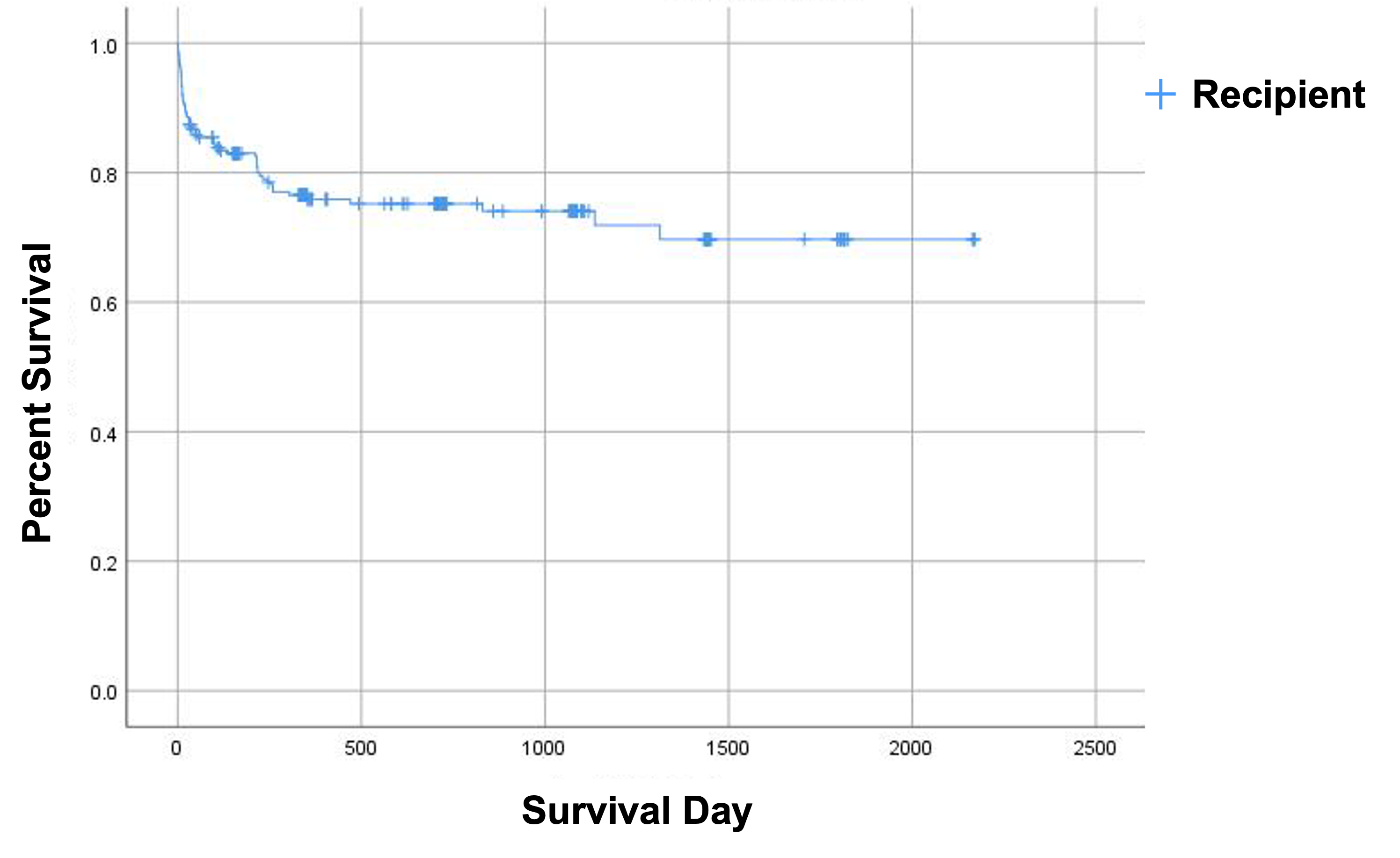Lung transplantation for pneumoconiosis in 2015-2023: Experience from two largest lung transplantation centers in China
Hua Wenjie1,2, Wang Zitao2, Li Xiaoshan2, Huang Man3,4, Chen Jingyu1,2,4.
1Wuxi School of Medicine, Jiangnan University, Wuxi, People's Republic of China; 2Department of Lung Transplantation Center, the Affiliated Wuxi People's Hospital of Nanjing Medical University, Wuxi, People's Republic of China; 3General Intensive Care Unit, the Second Affiliated Hospital of Zhejiang University, Hangzhou, People's Republic of China; 4Department of Lung Transplantation Center, the Second Affiliated Hospital of Zhejiang University, Hangzhou, People's Republic of China
Background: Pneumoconiosis refers to a disease caused by long-term inhalation of harmful dust in occupational activities, resulting in extensive fibrosis of the lungs as the main lesion. Pneumoconiosis is a statutory occupational disease in China. At the end of 2021, 915,000 patients with occupational pneumoconiosis had been reported nationwide. Lung transplantation is the most effective treatment for advanced pneumoconiosis patients.
Method: This retrospective study mainly reviewed information of pneumoconiosis lung transplantation cases reported from two of the largest lung transplant centers in China Lung Transplantation Registry system (CLuTR) between January 1st 2015 to December 31st 2023, including the characteristics of the donor and recipients, the details of the surgery, the postoperative complications, along with the survival.
Results: A total of 261 pneumoconiosis lung transplantations, accounting for 14.5% of total lung transplantations (261/1797), were reported in CLuTR in Wuxi People's Hospital (n=201) and the Second Affiliated Hospital, Zhejiang University School of Medicine (n=60), with a proportion of 50.19% of single-lung transplants. 85.2% were ECMO-assisted with V-V ECMO (69.6%) and V-A ECMO (25.0%). 2.7% of the total number were emergency lung transplantations, and 26.6% had intraoperative blood loss of more than 2,000 ml.

In 2018-2023, 87.8% of pneumoconiotic lung transplant donors were male, with an average age of 42.0±11.1 years in two centers. There were 97.3% of pneumoconiotic lung transplant donors who were brain dead, with a ventilator time of 6.0 (IQR:3.0-9.0) days and an oxygenation index of 420.3±85.7. In 2015-2023, 98.5% of pneumoconiotic lung transplant recipients at both centers were male, aged 48 ± 10.4 years, with the oldest aged 73 years and the youngest aged 23 years. In 2018-2023, the proportion of postoperative complications in pneumoconiotic lung transplant recipients was 32.3% for infections, followed by 23.8% for primary graft failure and 6.8% for anastomotic stenosis. In 2015-2023, the postoperative perioperative (<30 days), 3-month, 6-month, 1-year, and 3-year survival rates for pneumoconiotic lung transplant recipients were 88.2%, 84.6%, 82.5%, 75.9%, and 71.9%, respectively.

Conclusion: Our article summarizes the experience and data of pneumoconiosis transplantation at two of the largest lung transplantation centers in China: the Wuxi People's Hospital and the Second Affiliated Hospital, Zhejiang University School of Medicine, during the period from 2015 to 2023. While our summary of surgical characteristics, donor-recipient characteristics, postoperative complications, and survival rates can provide a reference for other lung transplantation centers worldwide, more detailed studies are still needed.
We express our gratitude to all the lung transplant workers at Wuxi People's Hospital and the Second Affiliated Hospital of Zhejiang University. We are thankful to the staff who are dedicated to CLuTR system maintenance. The study was supported by the National Key R & D Program "Research on Prevention and Control of Common and Frequent Diseases" in China (2023YFC2507105) and China Organ Transplant Development Foundation of Pneumoconiosis Lung Transplantation Special Fund.
[1] Pneumoconiosis
[2] Lung transplantation
